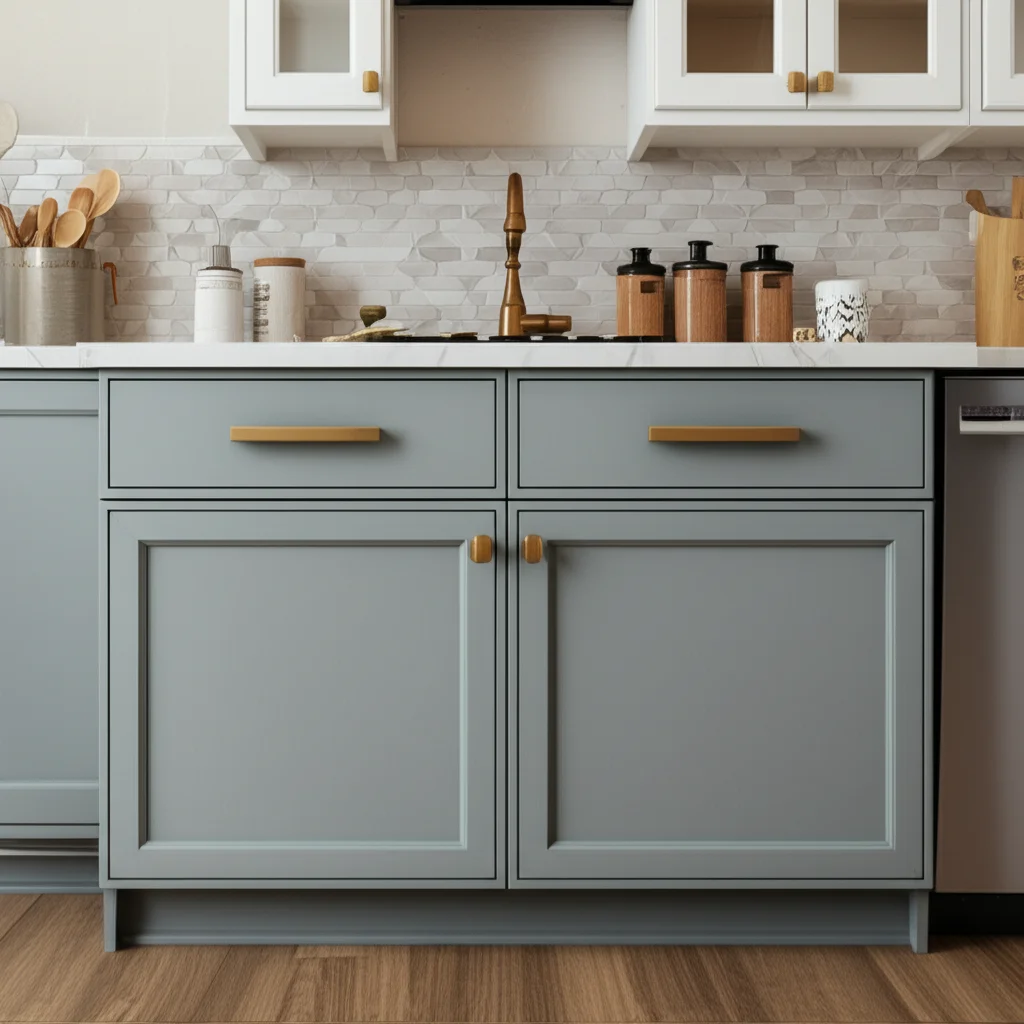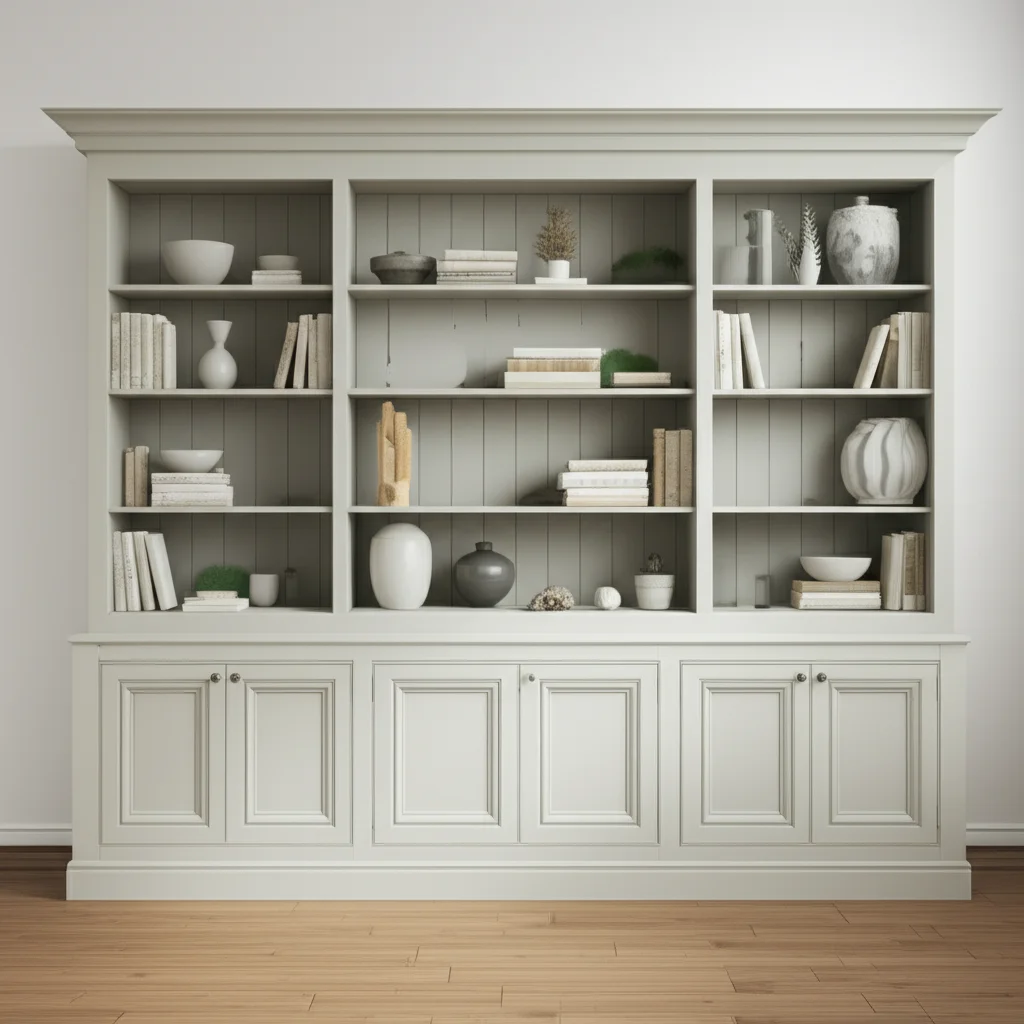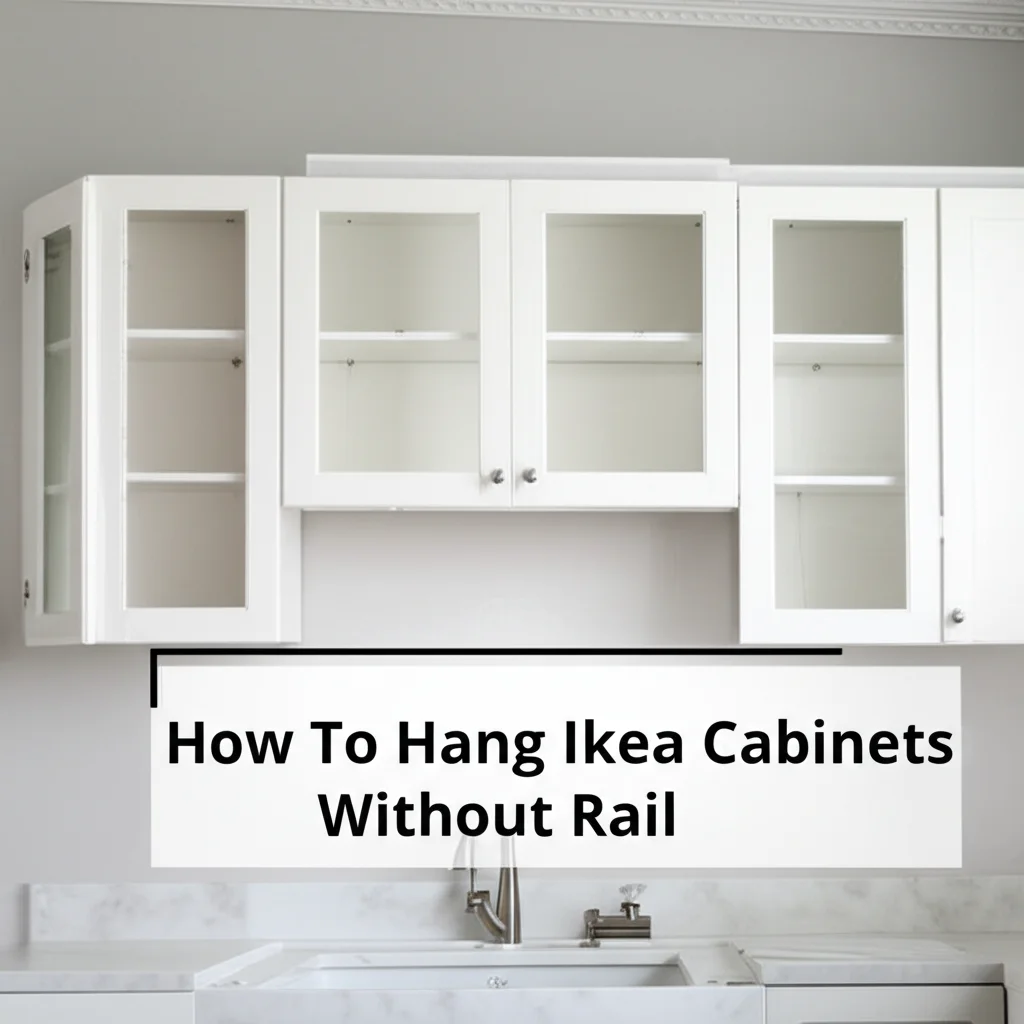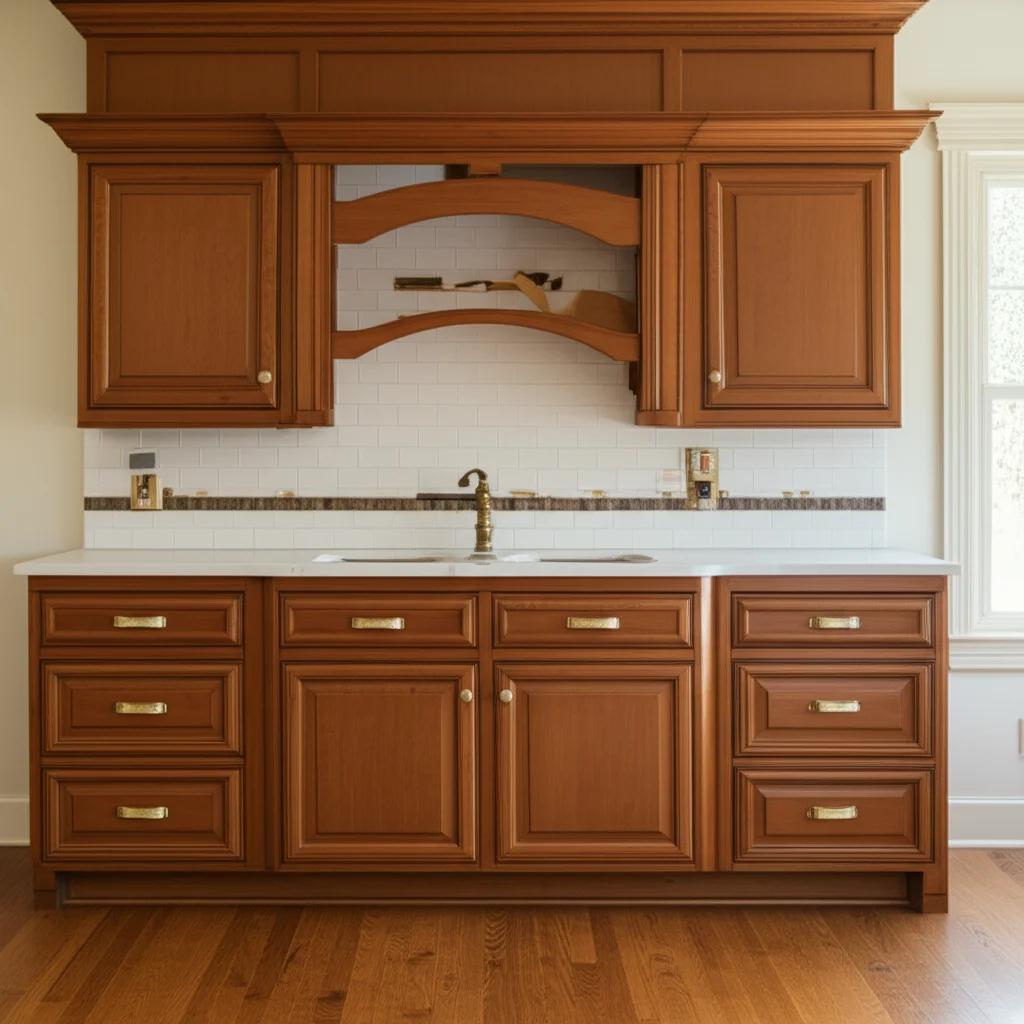· Todd Martin · Home Improvement · 17 min read
How To Paint Cabinet Hardware

Revitalize Your Home: How To Paint Cabinet Hardware
Tired of your cabinet hardware looking dull or outdated? Painting cabinet hardware is a simple, cost-effective way to transform the look of your kitchen, bathroom, or furniture pieces. You can give your home a fresh, modern update without the expense of buying new pulls and knobs. This guide will walk you through every step, ensuring your painted hardware is beautiful and durable. We will cover preparation, paint selection, application techniques, and crucial drying processes.
Painting cabinet hardware requires careful preparation and the right materials for lasting results. You will learn how to properly clean and prep your existing hardware, select the best primers and paints, and apply them smoothly. We will also discuss different painting methods, like spraying versus brushing, to help you achieve a professional finish. By following these steps, you can refresh your cabinets and elevate your entire living space.
Takeaway
- Remove all hardware before cleaning and painting.
- Clean hardware thoroughly to remove grease and grime.
- Sand surfaces lightly for paint adhesion.
- Use a high-quality metal primer.
- Apply multiple thin coats of paint and a durable topcoat.
- Allow ample drying time between coats and before reinstallation.
To paint cabinet hardware, remove each piece from its cabinet or drawer. Clean it thoroughly to remove dirt and oils. Lightly sand the surface for proper paint adhesion. Apply a metal-specific primer, followed by two to three thin coats of durable paint. Finish with a clear protective topcoat. Allow each coat to dry completely before handling or reinstallation.
Preparing Your Cabinet Hardware for Painting
Proper preparation is the most important step when you want to paint cabinet hardware. This ensures the paint sticks well and lasts a long time. Skipping these initial steps often leads to chipping or peeling paint later on. I always recommend taking your time here; it truly makes all the difference in the final outcome.
First, remove all cabinet hardware from your cabinets. Use a screwdriver to carefully detach each knob, pull, or hinge. Keep all screws and small parts together in a labeled bag or container. This prevents losing them and makes reinstallation easy later. You can also label each piece of hardware with its corresponding door or drawer number if you have many.
Next, clean the hardware thoroughly. Grease, grime, and old finishes can prevent paint from adhering properly. You can wash hardware with warm, soapy water and a scrub brush. For stubborn dirt or old paint, a degreaser or mineral spirits works well. I often find that older hardware benefits from a good soak in a cleaning solution. Explore our guide on how to clean old cabinet hardware for detailed instructions. If your hardware is brass, you might find tips on how to clean brass cabinet hardware helpful. After cleaning, rinse hardware completely and let it dry fully.
After cleaning, lightly sand the hardware. This creates a slightly rough surface, which gives the primer and paint something to grip onto. Use fine-grit sandpaper, around 220-grit, or a sanding sponge. Sand all surfaces that will be painted. For metal hardware, this step is crucial for paint adhesion. If you are preparing old or antique pieces, our article on how to clean antique hardware provides additional insights. Wipe off any sanding dust with a tack cloth or damp rag. Ensure the hardware is dust-free and dry before moving to the next stage.
Choosing the Right Primer and Paint for Durability
Selecting the correct primer and paint is essential when you want to paint cabinet hardware. The right products ensure a durable finish that withstands daily use. Not all paints are suitable for high-touch surfaces like cabinet pulls and knobs. I always recommend choosing products specifically designed for metal or high-traffic areas.
For primer, you need a product that creates a strong bond between the hardware and the paint. Look for a primer designed for metal surfaces. Many good options include self-etching primers or those explicitly labeled for “adhesion” or “bonding.” These primers help prevent chipping and ensure your paint job lasts. A quality primer also helps to hide imperfections and provides a uniform base color. Using a specialized primer means your paint will stick, even on slick metal surfaces.
When it comes to paint, durability is key. I suggest using spray paint for the easiest and smoothest finish on hardware. Look for enamel or epoxy-based spray paints. These types of paints are known for their hard, durable finishes. They resist chipping and scratching, which is important for frequently handled items. If you prefer a brush-on application, choose a high-quality alkyd (oil-based) enamel or a water-based acrylic-urethane paint. These paints offer excellent durability. Our guide on how to paint a metal chair provides more insights into suitable paints for metal.
Consider the finish you want to achieve. Paint comes in various sheens, from matte to high-gloss. A satin or semi-gloss finish is often a good choice for cabinet hardware. These finishes are durable and easy to clean. They also provide a subtle sheen that looks appealing without being too reflective. A clear protective topcoat, like a polyurethane or lacquer, will add another layer of protection. This topcoat further guards against wear and tear.
Essential Steps for Prepping Cabinet Hardware
Properly prepping cabinet hardware is critical for a long-lasting finish. This step involves more than just cleaning; it sets the foundation for successful painting. Think of it as preparing a canvas for a masterpiece. I know it seems like extra work, but it prevents future headaches like peeling paint.
First, organize your workspace. You need a well-ventilated area, preferably outdoors or in a garage with open windows. Lay down a drop cloth or old newspaper to protect your surfaces from overspray or drips. Have all your tools ready: sandpaper, cleaning supplies, primer, paint, and a way to hold the hardware. Many people use a piece of cardboard with small holes or a wire hanger to suspend knobs and pulls. This allows you to paint all sides at once without touching the wet surface.
Once your hardware is clean and dry from the previous step, it is time for a final wipe-down. Use a lint-free cloth dampened with rubbing alcohol or denatured alcohol. This removes any remaining oils, fingerprints, or dust particles that might have settled. Alcohol evaporates quickly, leaving no residue. This ensures your primer has a perfectly clean surface to adhere to.
Masking is also important for any parts you do not want painted. For example, if your knobs have a decorative backplate you wish to keep original, use painter’s tape to cover those areas. Ensure the tape is pressed down firmly to prevent any paint from seeping underneath. Take your time with this step for precise results.
Finally, set up your hardware for painting. If using a spray paint, you need to elevate each piece. Insert screws into a cardboard box, leaving the heads exposed to hold the knobs. For pulls, you can hang them from a wire stretched across two points. This setup lets you spray from all angles evenly. This careful preparation prevents the frustration of uneven coats or paint drips.
Painting Techniques: Spraying vs. Brushing Cabinet Hardware
When it comes to painting cabinet hardware, you have two primary options: spraying or brushing. Each method has its pros and cons, and the best choice depends on your desired finish and available tools. I have used both methods extensively, and I can tell you that the right technique makes a huge difference in the final look of your hardware.
Spraying Cabinet Hardware
Spraying is often the preferred method for painting cabinet hardware due to its ability to create a smooth, factory-like finish. Spray paint comes in aerosol cans and is easy to use. It delivers a fine mist of paint, minimizing brush strokes and drips. This method is ideal for achieving a uniform coat, especially on intricate or oddly shaped hardware pieces. I find that spray painting is faster for multiple pieces, too.
To spray paint effectively, hold the can about 8-12 inches away from the hardware. Use light, even passes, moving the can continuously. Overlapping each pass slightly ensures full coverage. It is better to apply several thin coats than one thick coat. Thick coats can lead to drips, unevenness, and longer drying times. Allow adequate drying time between coats, typically 15-30 minutes, as specified on the paint can. For best results, rotate the hardware or your position to ensure you cover all sides evenly. If you make a mistake, don’t worry; sometimes you can remove paint. Learn how to get paint off cabinets for general paint removal tips.
Brushing Cabinet Hardware
Brushing offers more control and is suitable if you are painting only a few pieces or prefer a hand-painted look. It requires a high-quality small brush, such as an artist’s brush or a fine-bristle synthetic brush. This method works well for detail work or if you want to apply thicker, more textured coats. If you are using a brush-on paint, such as a water-based acrylic enamel, ensure it is specifically designed for metal or high-wear surfaces.
When brushing, load your brush sparingly with paint. Apply thin, even coats, brushing in one direction where possible to minimize visible brush strokes. For intricate areas, use the tip of your brush to reach small crevices. Just like with spraying, multiple thin coats are always better than one thick coat. Allow each coat to dry completely before applying the next. This prevents smudging and ensures proper adhesion. Brushing allows for more personalized touches, but it may take more time to achieve a perfectly smooth finish. Remember that proper paint consistency is important for brush-on applications; sometimes, you might need to thin the paint. You can find general advice on thinning paints in resources like how to thin Valspar Cabinet and Furniture Paint.
Applying a Durable Topcoat for Longevity
After your paint layers are fully dry, applying a durable topcoat is the next crucial step. This protective layer is what truly ensures the longevity and resilience of your painted cabinet hardware. Without a topcoat, your newly painted pieces are vulnerable to chips, scratches, and wear from daily handling. I always tell people that the topcoat is the armor for your paint job; it’s non-negotiable for high-use items like cabinet hardware.
Choose a clear topcoat specifically designed for high-traffic areas or metal. Options include polyurethane, lacquer, or clear epoxy finishes. These products create a hard, protective barrier over the paint. They are resistant to moisture, oils, and physical abrasion. For spray paint, I recommend using a clear spray lacquer or a clear polyurethane spray. For brush-on paints, a brush-on water-based polyurethane works well. Ensure the topcoat is compatible with the type of paint you used. Some oil-based paints might react poorly with water-based topcoats, and vice-versa. Always read the product labels for compatibility instructions. Our article on how to seal cabinet paint can offer broader insights into sealing painted surfaces.
Apply the topcoat in thin, even layers, just as you did with the paint. If using a spray topcoat, hold the can 8-12 inches away and use sweeping motions. For brush-on topcoats, apply with a high-quality synthetic brush, avoiding heavy strokes that can leave marks. Multiple thin coats are far superior to one thick coat, which can become gummy, cloudy, or prone to cracking. I typically apply two to three thin coats for maximum durability.
Allow ample drying time between each topcoat application. The drying time will be specified on the product label and can vary based on humidity and temperature. Rushing this step can lead to a sticky finish or trapped moisture, compromising the protective layer. Even if the surface feels dry to the touch, the layers underneath may still be curing. Patience here prevents a sticky mess. Once the final topcoat is applied, let it cure fully before handling the hardware, which brings us to the next important step.
Drying, Curing, and Reinstallation Tips
The drying and curing process is just as important as the painting itself when you paint cabinet hardware. Rushing this stage can ruin all your hard work. Paint needs time to dry through evaporation and then cure, which involves a chemical hardening process. Ignoring these times can lead to tacky hardware, fingerprints, or chips upon reinstallation. I know it’s tempting to put them back on right away, but resist the urge!
First, understand the difference between dry to the touch and fully cured. “Dry to the touch” means the surface feels dry and won’t smudge if lightly touched. This usually takes minutes to a few hours. “Cured” means the paint has hardened completely and reached its maximum durability. Curing can take anywhere from 24 hours to several days, or even weeks, depending on the paint type, humidity, and temperature. Always follow the manufacturer’s recommendations on the paint and topcoat labels for curing times. For example, if you’ve painted with enamel, it generally requires a longer curing period.
During the drying and curing process, keep your hardware in a clean, dust-free, and well-ventilated area. Avoid direct sunlight or extreme temperatures, which can affect the curing process. If you used a method to suspend the hardware for painting, keep it suspended during this time. This ensures air circulates around all sides, promoting even drying. Do not stack or touch the hardware excessively until it is fully cured.
Once the hardware is fully cured, it is ready for reinstallation. Handle each piece carefully to avoid scratching the new finish. Use the original screws you set aside. When reattaching knobs and pulls, do not overtighten the screws. Overtightening can cause the hardware to crack or the paint to chip around the screw holes. Tighten just enough until the hardware is secure.
If you are reinstalling hinges, be mindful of their movement. Sometimes, the new paint can make hinges feel a bit stiff at first. You can apply a tiny amount of lubricant, like silicone spray, to the hinge pins if necessary. This will help them move smoothly. Taking care during reinstallation ensures your newly painted cabinet hardware looks perfect and functions well for years to come.
Troubleshooting Common Issues When Painting Cabinet Hardware
Even with the best preparation, you might encounter some common issues when you paint cabinet hardware. Knowing how to troubleshoot these problems can save your project and give you a professional-looking result. I have dealt with these issues many times, and there is usually a simple fix.
Problem: Drips or Runs
Drips and runs usually happen when you apply too much paint in one coat. This is a common mistake, especially with spray paint. The paint builds up and starts to run down the surface.
- Solution: If the paint is still wet, you might be able to wipe it carefully with a clean brush or cloth to smooth it out. If it is dry, you will need to sand down the affected area. Use fine-grit sandpaper (around 320-grit) to gently smooth the drip until it is flush with the rest of the surface. Then, clean off the dust and reapply a very thin coat of paint. Remember, multiple thin coats are always better than one thick one.
Problem: Peeling or Chipping Paint
This is one of the most frustrating problems, and it usually points back to improper preparation. Peeling paint means the paint did not adhere well to the surface.
- Solution: This typically means you did not clean or sand the hardware enough. You will need to strip the paint off the affected pieces. You can use paint stripper or sand all the paint off. Once stripped, thoroughly clean the hardware again using a degreaser, and then sand it meticulously. Ensure you use a high-quality metal primer before repainting. Remember that thorough cleaning is key; revisit our tips on how to clean metal hardware for best practices.
Problem: Uneven or Patchy Coverage
Sometimes, you might find that certain areas of the hardware look lighter or have thin spots after drying. This means the paint was not applied evenly.
- Solution: This often occurs if you rush or do not maintain a consistent distance when spray painting. Apply another thin coat of paint. Ensure you are moving the spray can consistently and overlapping your passes. If brushing, make sure your brush is evenly loaded with paint and you are using consistent strokes. Always check your work under good lighting.
Problem: Sticky or Tacky Finish
If your painted hardware feels sticky even after drying, it means the paint has not fully cured or there was a problem with the paint. High humidity or applying coats too thickly can also cause this.
- Solution: Give the hardware more time to cure in a dry, well-ventilated area. Sometimes, it just needs more air exposure. If it remains sticky after an extended period (several days), the issue might be with the paint product itself or an incompatibility between layers. In severe cases, you might need to strip and repaint. Ensuring proper ventilation during the painting and drying process is crucial.
Addressing these issues patiently will ensure your painted cabinet hardware not only looks good but also stands the test of time.
Frequently Asked Questions About Painting Cabinet Hardware
Can I paint any type of cabinet hardware?
Most metal cabinet hardware can be painted, including brass, steel, and aluminum. Plastic hardware can also be painted if properly prepared with an appropriate primer. However, antique or valuable hardware might be better left unpainted to preserve its original character and value. I always recommend testing paint on an inconspicuous spot if you are unsure.
What is the best paint for cabinet hardware?
For durability and a smooth finish, enamel or epoxy-based spray paints are often the best choice for metal hardware. These paints provide a hard, chip-resistant surface. If brushing, use a high-quality alkyd (oil-based) enamel or a water-based acrylic-urethane paint for long-lasting results. Always follow up with a clear protective topcoat.
How long does painted cabinet hardware last?
The longevity of painted cabinet hardware depends on proper preparation, paint quality, and usage. With thorough cleaning, priming, multiple thin paint coats, and a durable topcoat, painted hardware can last for many years. High-traffic hardware may show wear sooner than less-used pieces, but touch-ups are simple.
Do I need to prime cabinet hardware before painting?
Yes, priming is essential. Primer creates a bond between the hardware and the paint, ensuring proper adhesion and preventing chipping or peeling. A metal-specific primer or an adhesion-promoting primer is recommended for the best results. Skipping this step significantly compromises the durability of your paint job.
How do I prevent chipping?
To prevent chipping, always clean and lightly sand the hardware first. Use a high-quality primer and apply paint in multiple thin coats, allowing each to dry completely. Finish with two to three layers of a durable clear topcoat, such as polyurethane or lacquer, designed for high-traffic surfaces. Do not reinstall hardware until it is fully cured.
Can I paint hardware without removing it from the cabinets?
While technically possible, painting hardware without removing it is highly discouraged. You risk getting paint on your cabinets, achieving uneven coverage, and creating a less durable finish. For the best results, always remove all hardware before cleaning, priming, and painting. This ensures all surfaces are properly prepped and coated.
Conclusion: Transform Your Cabinets with Painted Hardware
Painting cabinet hardware is a powerful and affordable way to update your home’s appearance. You can achieve a professional, durable finish that mimics brand-new hardware. I believe this DIY project offers immense satisfaction and adds significant value to your living space. By following the detailed steps we have outlined, you are now equipped to tackle this task with confidence.
Remember, the key to success lies in careful preparation. Thorough cleaning, light sanding, and a good quality primer lay the foundation for a lasting finish. Applying multiple thin coats of durable paint and a protective topcoat ensures your updated cabinet hardware withstands daily use. Patience during the drying and curing phases is crucial for a chip-resistant result. Your newly painted hardware will elevate the entire room, making your cabinets feel fresh and modern.
Embrace this rewarding project. Give your cabinets and furniture a complete refresh by learning how to paint cabinet hardware. Your home will thank you for the stylish upgrade!





